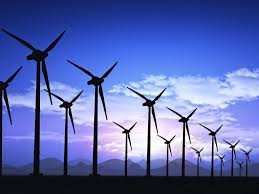Solar and wind will account for 70% of the nearly 40GW of new large-scale US electricity generating capacity that developers plan to bring into commercial operation in 2021, according to a preliminary estimate by the federal Energy Information Administration (EIA).
Get the market insight you need into the global oil & gas industry’s energy transition – from the new newsletter from Upstream and Recharge. Sign up here
More than half of planned PV additions are in four states: Texas (28%), Nevada (9%), California (9%) and North Carolina (7%), with new PV installations expected to total almost 15.5GW, or 39% of capacity additions, 12.2GW wind (31%); natural gas 6.6GW (16%); utility-scale battery storage, 4.3GW (11%); nuclear 1.1GW (3%), and other 0.2GW (0.1%).
Some of the build-out in Texas reflects investors’ belief that electricity demand will rebound as the Canada-size economy there recovers from the Covid-19 pandemic, while former pacesetter coal will continue losing market share to cleaner alternatives.
Texas and Oklahoma will account for more than half of 2021 wind capacity additions, according to EIA, the statistics arm of the US Department of Energy.
With more than 30GW installed, Texas remains the largest wind market in the western hemisphere. In neighbouring Oklahoma, the 999MW Traverse project sponsored by a unit of utility holding company American Electric power will be the nation’s largest wind farm installation this year.
Texas, Ohio and Pennsylvania will build more than 70% of planned natural gas capacity this year including 3.9GW of combined-cycle generators and 2.6GW of combustion-turbine generators.
Utility-scale battery-storage installations will more than quadruple this year as systems are increasingly paired with fast-growing renewables. The world’s largest solar-powered battery (409MW) is under construction by utility Florida Power & Light at the Manatee Solar energy Center in Florida and is scheduled to be operational in late 2021.
Last month, Congress extended federal tax credits for both solar (two years) and onshore wind (one year), while enabling offshore wind projects to claim the investment tax credit at 30% that began construction after 1 January 2017 as well as those that will do so through 2025.
US President-elect Joe Biden is promising substantial further federal support for renewables and related clean technologies after he takes office on 20 January. Congress is likely to extend the investment tax credit (ITC) to standalone energy storage with Biden’s Democratic Party soon to be in control of both houses.
The US wind industry continued its torrid pace of construction through 2020 with almost 2GW of installations in the third quarter despite Covid-related challenges and is on track to set a national record for new capacity this year, according to figures from the American Wind Energy Association.
The nation’s solar fleet in the third quarter surged 46% from a year earlier to 3.8GW, according to the latest figures from Solar Energy Industries Association.

 Iran Energy News Oil, Gas, Petrochemical and Energy Field Specialized Channel
Iran Energy News Oil, Gas, Petrochemical and Energy Field Specialized Channel



